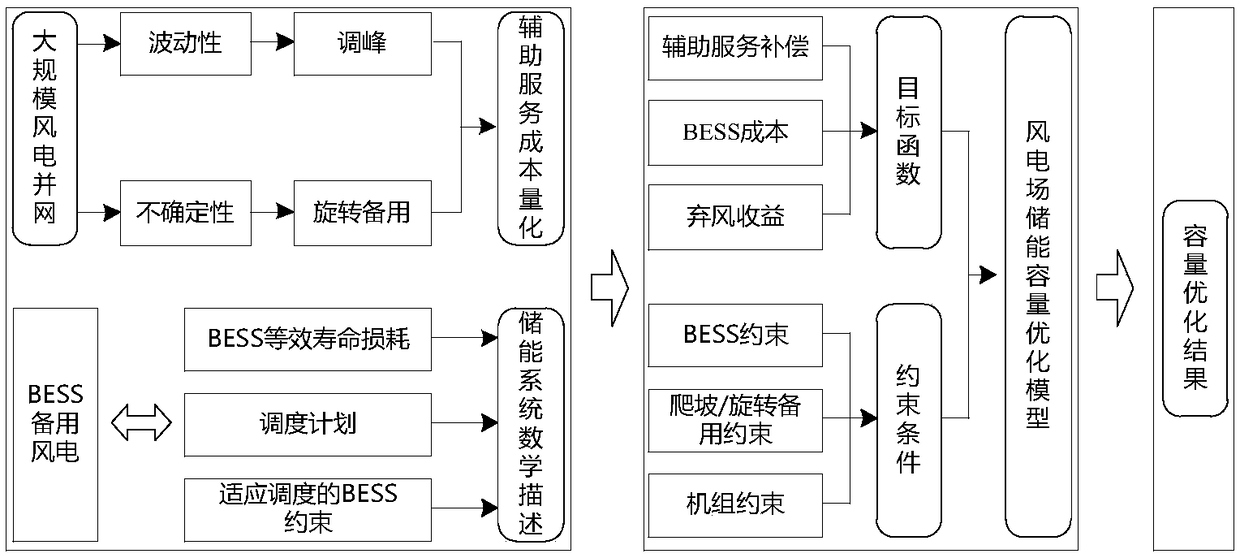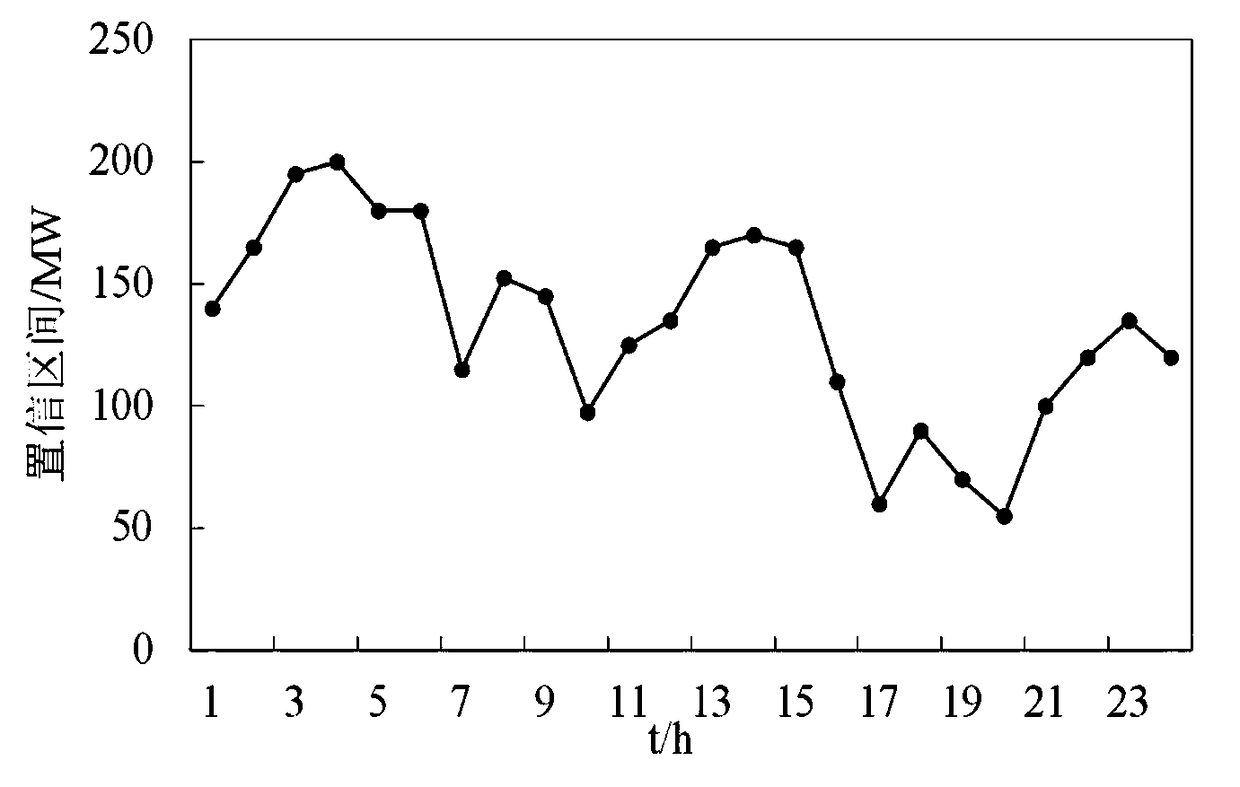An energy storage capacity optimization method for large-scale wind farms considering ancillary service compensation
An ancillary service and energy storage capacity technology, applied in wind power generation, electrical components, circuit devices, etc., can solve the problems of poor enthusiasm for energy storage in wind farms, failure to consider ancillary service compensation, and low income from combined wind-storage operations
- Summary
- Abstract
- Description
- Claims
- Application Information
AI Technical Summary
Problems solved by technology
Method used
Image
Examples
Embodiment 1
[0119] A method for optimizing the energy storage capacity of a large-scale wind farm considering ancillary service compensation, comprising the following steps:
[0120] Step 1: Take the quantified degree of mitigation to the system ancillary service costs before and after the addition of BESS as ancillary service compensation, and calculate the wind-storage combined operation benefit based on the ancillary service compensation and the obtained direct economic benefits of the wind farm’s configuration of energy storage;
[0121] Step 2: After the energy storage provides backup for the uncertainty of wind power, update the BESS constraints adapted to the dispatch plan;
[0122] Step 3: The updated BESS constraints are combined with other conventional constraints to form a set of constraints, and the objective function is obtained by maximizing the combined operation income of wind and storage, and the wind farm energy storage capacity optimization model is constructed according...
Embodiment 2
[0162] Based on embodiment 1, step 2 includes the following steps:
[0163] Step 2.1: On the premise of allowing wind curtailment, define the charge and discharge power and state of charge of the BESS, as shown in Equation 6:
[0164]
[0165] Among them, S t Represents the charging and discharging power of the battery at time t; P wind,t represents the forecast value of wind power at time t; P combined,t Represents the grid-connected power when the wind and storage are operating in combination at time t; P wloss,t Represents the wind abandonment value at time t; S soc,t-1 Represents the charge capacity of the BESS at time t; η s Represents the charging and discharging efficiency; Δt represents the scheduling time interval, 1h;
[0166] Step 2.2: According to the limitation of BESS rated charging and discharging power and energy storage capacity, express the BESS constraint at time t as shown in Equation 7:
[0167]
[0168] Among them, P cap Indicates the rated p...
Embodiment 3
[0174] Based on embodiment 1, step 3 includes the following steps:
[0175] Step 3 includes the following steps:
[0176] Step 3.1: The updated BESS constraints at time t are combined with other conventional constraints to form a set of constraints, as shown in Equation 9:
[0177]
[0178] Among them, P net,t represents the net load at time t; P load,t represents the system load demand at time t; P wind,t Represents the forecast value of wind power at time t; r t up / r t dn Indicates the upper / lower limit of the maximum ramp rate allowed by the online unit at time t; Ng Indicates the number of conventional units; Indicates the maximum / minimum output power allowed by conventional unit i; u i,t Indicates the start and stop state of unit i in the t period, 0-1 variable; Indicates the upper / lower deviation range of the wind power forecast value; R load,t Represents the standby demand of the load. Due to the high repeatability of the daily load curve, the standard ...
PUM
 Login to View More
Login to View More Abstract
Description
Claims
Application Information
 Login to View More
Login to View More - R&D
- Intellectual Property
- Life Sciences
- Materials
- Tech Scout
- Unparalleled Data Quality
- Higher Quality Content
- 60% Fewer Hallucinations
Browse by: Latest US Patents, China's latest patents, Technical Efficacy Thesaurus, Application Domain, Technology Topic, Popular Technical Reports.
© 2025 PatSnap. All rights reserved.Legal|Privacy policy|Modern Slavery Act Transparency Statement|Sitemap|About US| Contact US: help@patsnap.com



